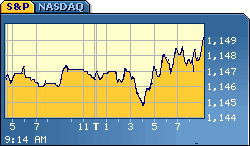
President George W. Bush's proposal to curb rising foreclosures may provide breathing room to hundreds of thousands of homeowners, but stops short of reaching the most troubled borrowers. The plan could potentially help 1.2 million homeowners, though housing-watchers such as Wharton School's Susan Wachter put the number in the "several" hundred thousands. A requirement that homeowners have at least a 3.0 percent equity stake is difficult since many loans were originated with zero down-payments, and prices in areas like Detroit have already fallen 10 percent or more in the year through September.
Federal Reserve Board Chairman Ben Bernanke endorsed the anti-foreclosure mortgage workout plan unveiled by the Bush administration in cooperation with home lending industry groups.
U.S. Treasury Secretary Henry Paulson's plan to prevent as many as 1.2 million people from losing their homes by freezing interest rates on subprime adjustable-rate mortgages will bring no benefit to the depreciating housing market. "The fundamental problem with housing is oversupply.''
Bush subprime plan limited but a step forward. Of the perhaps 2 million subprime ARMS that are expected to reset through the end of 2009, only 240,000 of those would be covered by the freeze, according to an analysis made by investment bank Barclays Capital as reported in The New York Times. The Center for Responsible Lending, a group that promotes homeownership and works to curb predatory lending, estimates that only 145,000 households will qualify for the rate freeze.
Market volatility, initially triggered by the U.S. subprime mortgage crisis, continues to spread and an uncertainty prevails due to a lack of transparency, European Central Bank Executive Board member Juergen Stark said Thursday. "Some financial institutions in Europe still don't know how the turmoil has affected their balance sheets," Stark said.
About 4.5% of auto loans made in 2006 to top-rated borrowers were at least 30 days delinquent as of the end of September, up from 2.9% the previous month, according to a Lehman Brothers survey of companies servicing these loans. That is the biggest one-month jump in at least eight years. Lehman says 12% of subprime borrowers, who have poorer credit records, were delinquent on their 2006 auto loans as of September. That is the highest level since 2002 and up from 11.1% the previous month. About $575 billion in loans for new and used cars are made annually, according to the National Automotive Finance Association.
Third quarter mortgage delinquencies rose to 5.6% . The subprime delinquencies rose to 16.3% with a 18.8% rate for adjustable rate subprime -- the biggest concern. Foreclosures started in Q3 were 0.78% -- a record high -- as the percentage of loans in the foreclosure process rose to 1.69%, also the highest recorded.
U.S. mortgage assets in collateralized debt obligations have lost so much value that the top classes of the securities may be worth as little as 20 cents on the dollar in a liquidation, Barclays Plc analysts said in a report.
Big as the potential losses from the sub-prime fallout might be, the profitability of the financial sector is so breathtakingly large that it can take the hit on the chin and move on, HSBC calculates. In 2006, US banks and brokers pulled in a combined $155bn in profits. After paying shareholders $55bn in dividends, shareholders funds rose by $100bn. Even after this year's massive writedowns, net assets could rise again. It hardly points to a serious credit contraction.
Alabama, Puerto Rico and Connecticut sold the largest of $9.5 billion in long-term offerings during the busiest week for municipal bond sales since October.
First Marblehead Corp., the third- largest securitizer of student loans, cut its dividend by more than half and said it won't package additional loans this quarter because of ``uneconomic terms'' in capital markets.
Joseph Lewis, the Bahamas-based currency trader who bought 7 percent of Bear Stearns Cos. earlier this year, increased his stake in the fifth-largest U.S. securities firm to 8 percent.
The Japanese economy expanded at a slower-than-expected pace in Q3, as business investment and domestic demand remained tepid. Annualized GDP was revised down to 1.5 percent from 2.6 percent.
National Semiconductor Corp., the maker of chips for mobile devices such as Apple Inc.'s iPhone, reported little change in second-quarter profit and gave a sales forecast that may miss analysts' estimates. Resellers of National's products may be curbing orders to make sure they aren't left with inventory in the first part of the year, when mobile-phone and personal-computer shipments typically fall.
The cost of borrowing between banks in the UK fell in the short-term, but far less than the 25 basis points shaved off by the Bank of England yesterday. The London Interbank Offered Rate (Libor) was 6.61 pct on a three-month basis, down from yesterday, but only by four points. Meanwhile, on an overnight basis, Libor rates dipped, to 5.69 pct from 5.74 pct. This still remains far above the BoE's 5.50 pct Bank rate. "Today's Libor fixing makes rather grim reading for the BoE, as one of their reasons for cutting interest rates yesterday was to alleviate liquidity concerns," said an analyst at IFR Markets, John Ratcliffe.
 U.S. stock-index futures gained after the Labor Department said employers added more jobs in November than economists had forecast, easing concern that the housing slump will drag the nation into a recession.
U.S. stock-index futures gained after the Labor Department said employers added more jobs in November than economists had forecast, easing concern that the housing slump will drag the nation into a recession.
Friday, December 7, 2007
The plan to prevent the foreclosure mess!
Posted by
Fred
at
11:09 AM
![]()
Subscribe to:
Post Comments (Atom)



No comments:
Post a Comment